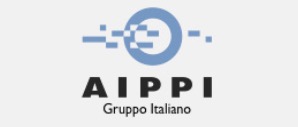WHAT DOES THE © SYMBOL INDICATE?
The symbol © indicates all the regulations on copyright and applies to the so-called “intellectual works”: literary, musical, scientific, didactic, musical compositions, choreographic works, works of sculpture, painting, the art of drawing, engraving and similar figurative arts, including scenography, drawings and works of architecture; works of cinematographic art, photographic works, and databases.
In Italy, copyright is also applicable to software.
WHO IS THE HOLDER OF THE RIGHTS?
The holder of the rights on the intellectual work is usually the author or co-author, but in the case of a work created in fulfillment of an employment contract or on commission, the author is the only holder of moral rights , while the property and economic rights belong to the employer.
The moral right to be recognized as the author of the work is not transmissible. The economic rights are, however, transferable and by virtue of art. 25 of the law on authorship, last for the author’s entire life and for seventy years after his death.
HOW DO YOU ACQUIRE THE RIGHT?
The copyright is originally acquired for the sole fact of the creation of the work, without the need for any type of administrative fulfillment, be it filing or registration, as is the case, however, in the field of patents and trademarks. However, depositing a work with the competent offices has the undoubted advantage of providing the author with certain proof of authorship and the date of creation of a particular work.
WHAT IS THE TRADEMARK LICENSE AGREEMENT?
With the Trademark License Agreement, the owner of a distinctive sign (licensor) allows another person (licensee) to use his own trademark to distinguish products or services for a fixed or calculated fee on sales (royalty).
The ownership of the trademark always remains with the owner and the licensee can use it according to the conditions established in the contract. This allows the owner to economically exploit the prestige of his distinctive mark or to extend his commercial offer to new territories or to new types of products or services. The licensee can instead start his business or increase it by exploiting the reputation of the licensed brand.
The trademark license is mainly used by those who want to exploit their brand to enter new markets through business partners or other entrepreneurs. For this reason we often find the trademark license together with more complex commercial contracts, such as eg. franchising agreements and commercial distribution agreements.
The license can be granted on an exclusive basis (only the licensee can use the trademark), or without exclusivity (the licensor can appoint other licensees and / or use the trademark on his own). Furthermore, the license of a trademark can cover all or only a part of the products or services for which it was registered. For example, a company operating in the apparel sector may license its brands in the men’s / women’s sector to several licensees or decide to grant exclusive use of all its brands to a foreign licensee to penetrate a market in which still does not have the necessary organization and experience.
In the event that the license is not exclusive and multiple producers can produce products or services with the same logo or trade name, the licensees must be specifically obliged to produce goods of equal quality. This allows you to avoid confusing the final consumer with apparently similar products but of different quality.
WHAT ARE THE TRADEMARK REGISTRATION CLASSES?
When you want to register a trademark it is essential to know how to choose the right class, or classes, to which your product belongs, which are different for each category of goods or services, because the trademark will be protected only for that category.
The trademark registration classeswere born from the Nice Agreement stipulated in 1957 which is continuously revised. When you are about to register a new trademark, you must therefore choose the classes very carefully: the protection of our trademark will be valid only for those classes, not for others.
If we produce T-shirts and register the trademark in class 25, we can protect our trademark from being used by other companies in the clothing sector, but not by wine producers, for example.
To avoid registering a trademark similar to that of a competitor, it is therefore essential to conduct a priority search that studies the trademarks already registered in the classes of our interest. This, on the one hand, minimizes the risk that the trademark filing is not accepted due to lack of originality, on the other, it avoids future disputes by owners of similar brands. This way you can better protect your business and make it truly a profitable investment.
WHAT DOES THE ® SYMBOL INDICATE?
The ® symbol indicates a “registered trademark“, a trademark that has already been granted.
To be able to affix the ® symbol next to a trademark, you must wait until you have received theregistration number, not to be confused with the number of the application in the application phase.
WHAT DOES THE TM SYMBOLMEAN? ️ ™️
The TM (™) symbol is the acronym for “TradeMark” and indicates that it is a registered trademarkand not yet granted.
WHAT IS A LOGO?
The logo is thefigurative part of a brand, also called a figurative trademark, which personalizes and provides added value to it.
It is a distinctive sign that, if creatively created from a graphic point of view, distinguishes the brand from those of other competitors in the market segment.
HOW DO YOU PROTECT A LOGO?
The first step to take is to carry out a priority search. Depositing a logo without prior verification is definitely risky, to avoid losing your investment and to avoid running into possible disputes. Subsequently, if there are no obstacles, the application for registration can be filed.




